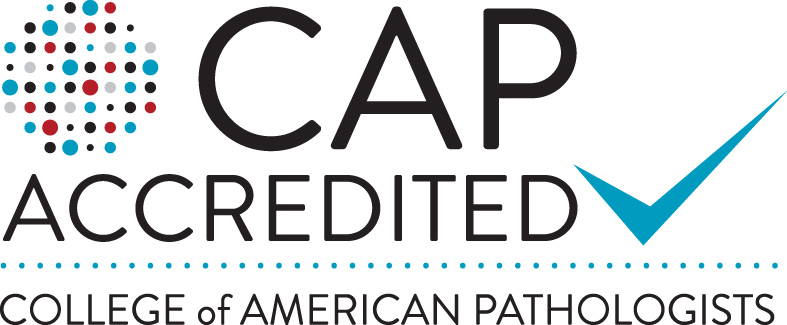If you’ve attended recent conferences focused on life sciences, you might have heard the phrase “multiomics brings together all the puzzle pieces,” or something similar. More research has begun to adopt this new approach of bringing together multiple “omes” in a study to see a better picture than if you only had one “ome.” In April 2021, Diversigen’s Product Manager Dr. Carlos Merino hosted a webinar with guest speakers Diversigen’s Dr. Tonya Ward, Metabolon’s Dr. Greg Michelotti and Stanford University’s Dr. Nima Aghaeepour. They shared their experiences on combining multiomic data within their research, which enables them to see the research from a different perspective and accelerate new discoveries.
If you are interested in watching the entire webinar, click on the video embedded below.
Progress of Omics in Microbiome Studies
Here are the highlights of 3 examples of the multiomics approach presented by the guest speakers.
(1) Exploring mechanisms behind irritable bowel syndrome (IBS) using multiomics
Dr. Tonya Ward, Director of Data Science and Bioinformatics at Diversigen, presented a research study that identified a subset of specific mechanisms underlying IBS using multiomic data. To explore the mechanisms behind IBS further, the team expanded their focus by studying the gut microbiome, metabolomics and metatranscriptomics on collected stool samples.
“Symptoms are affected by diet host genetics and the environment, and there are periods of remission which can make it really hard to study in terms of a cross sectional design and because these phenotypes can be changing. So that’s why we wanted to integrate multiomic measurements with longitudinal tracking to try and identify IBS subtype specific mechanisms behind ideas.”
To shed light on new targets for treatment of IBS, they looked at the functional profile of the data collected from each “ome” that was derived from the shotgun metagenomics they performed on the stool samples. By analyzing metabolomics, metagenomics, and transcriptomics, they found that together these “omics” allowed them to identify increased degradation of purine nucleotides by host and microbes.
[Interested in learning more about their study? Click on the link to their paper Longitudinal Multi-omics Reveals Subset-Specific Mechanisms Underlying Irritable Bowel Syndrome]
(2) Multiomics opening doors to new ALS treatment and therapies
Dr. Greg Michelotti from Metabolon presented a case study on how gut dysbiosis and changes in the gut microbial composition can affect neurological functions and manifestations of amyotrophic lateral sclerosis (ALS) in mice.
The challenge is that treatment strategies are needed for ALS that can permeate the blood-brain barrier (BBB). It has been postulated that certain gut metabolites could modify the course of the disease.
“Leading the metabolomics floor for Metabolon, we’ve really seen the utility of metabolomics to provide functional insights for microbial activity. And everything Tonya just described represents a quintessential study in how microbial activity is altering gut activity and gut profiles, resulting in dysbiosis and syndromes related to gut disease.”
Using metagenomic shotgun sequencing revealed that the gut microbial composition of Akkermansia muciniphila (AM) in ALS mice diverged from the wild type before the appearance of motor dysfunction (a symptom of ALS). The team at Metabolon found that AM colonization improved motor degeneration and that AM colonization increased when a nicotinamide molecule (NAM) treatment was applied – improving motor performance in ALS mice.
By looking at not only the gut microbiome but also the gut metabolites of ALS mice, the team was able to find a new treatment strategy for the disease.
[If you are interested in learning more about Metabolon’s multiomic studies, visit their website at www.metabolon.com]
(3) Multiomics modeling in translational research
Dr. Nima Aghaeepour from Stanford University presented a case study focused on multiomics and machine learning to understand the normal progression of the immune system during pregnancy.
“Preterm birth particularly is the single largest cause of death in children under 5 years old and it’s growing globally. If we could understand what is happening biologically during pregnancy, we can intervene in that process and hopefully improve outcomes of these neonates all the way into adulthood. During pregnancy, the immune system is striking for a balance between pathogen defense for the mother versus immune tolerance for the fetus. So, if we could understand what the normal progression of the immune system during pregnancy looks like, hopefully we can use that to detect abnormalities.”
Dr. Aghaeepour’s team used host transcriptomics, proteomics, metabolomics, and microbiome analysis.
“We came up with a more sophisticated machine learning algorithm that analyzes each data set independently extracts their relevant characteristics from [each sample] and then a higher-level model combines all of those to make the final prediction.”
With the combination of these different “omic” approaches along with their machine learning program integrating the “omes,” they were able to build unifying predictive models applicable to other data sets.
“A lot of various measurements correlate with each other when you measure them in the same set of patients. So, you must take a more principled approach, [a multiomics approach], because you’re trying to minimize your error rate.”
[If you are interested in learning more about Dr. Nima Aghaeepour’s multiomics modeling in translational research, click here to visit his lab’s webpage.]
Want to watch the entire webinar? Click on the embedded video above or click on the link here to watch the full video.
To learn more about what microbiome lab services Diversigen has to offer, browse our website, or send us an email at info@diversigen.com.


